First of two parts
Here is digital storytelling at its best: a story with high level emotional content. A father searches for his daughter, Adina Lange, trapped five feet under by a snow avalanche.
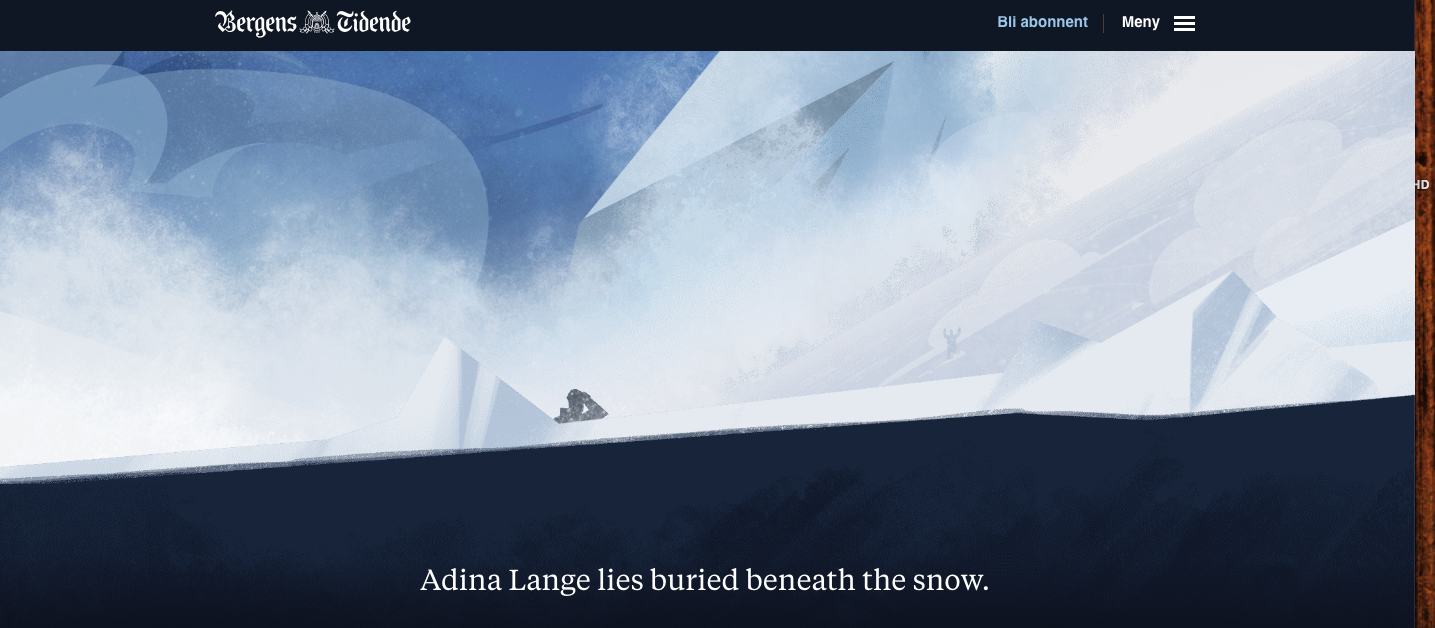
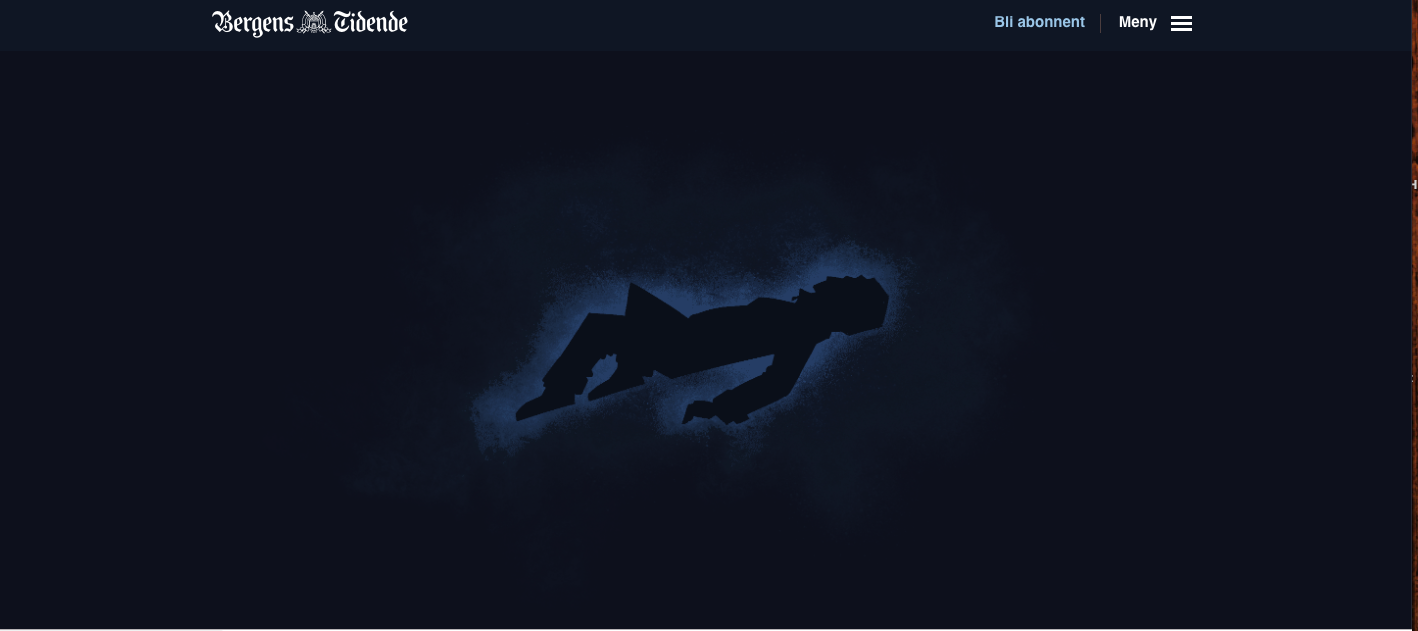
Combine the main visual elements of the New York Times’ Snow Fall, with a highly personal story, and add all that we as storytellers have learned since Snow Fall was published in 2012, and you have a winner, indeed. Snow Fall tells the story of skiers and snowboarders trapped beneath an avalanche in Washington state’s Cascade Mountains.
It tells that story through text, photos, videos and interactive graphics that blend seamlessly and come alive
Some questions for Bjorn Asle Nord, writer of the piece
Bjorn spent a period of 5 to 6 months working on the story. I had the pleasure of chatting with him.
Mario: How did you get the idea for the story?
Bjorn:
I got the idea from a simple an ordinary news piece about the incident, in my own paper.
https://www.bt.no/nyheter/lokalt/i/LzLKq/–Vi-trodde-ikke-hun-skulle-vare-i-live
Mario: How did the creative process begin?
Bjorn:
I started the process by looking at Snow Fall and discussing the idea with some of my mentors in narrative journalism, Tom French and Mark Kramer.
I looked upon it as a digital project from day one, specially designed for a mobile phone, also when it came to how I should tell and write it.
And I involved our data designers/journalist from early stage to discuss how we could use digital tools/approach.
Mario: Tell me about the team.
Bjorn:
The editor involved from the start was Trond Olav Skrunes, but he left the paper in August to work in Oslo for VG. But he supported me from the very first moment and wanted to put all the efforts we could to make it special. That was very important. And he got support from the top editors, like Jan Stian Vold and Øyulf Hjertenes.
I did the all the extreme researched, spoke to more than 40 sources, handled the conversations an in-depth interviews with all the skiers and central rescuers and got all the logs. I can go deeper on the process if you want me to, and include the game designer we used as well, Steffen Oie, we collaborated very well and he was so aware of taking care of the story and narrative with no show-off and interruptions.
What has changed since Snow Fall?
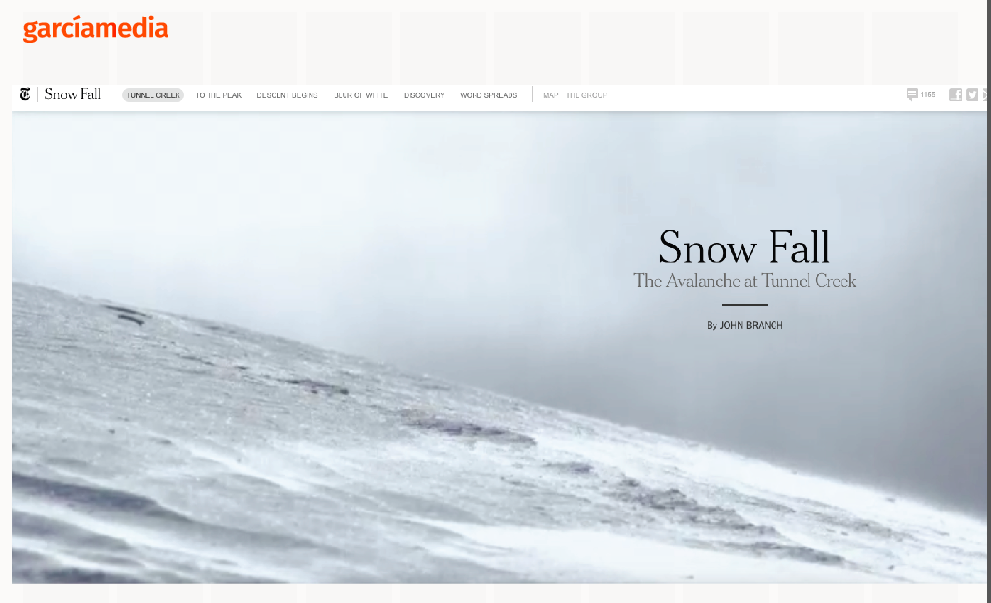
- Snow Fall, the iconic NY Times piece, was not told lineally, although there were visual elements that appear throughout the text, but NOT necessarily as part of the story’s continuity, something which prompted criticism at the time.
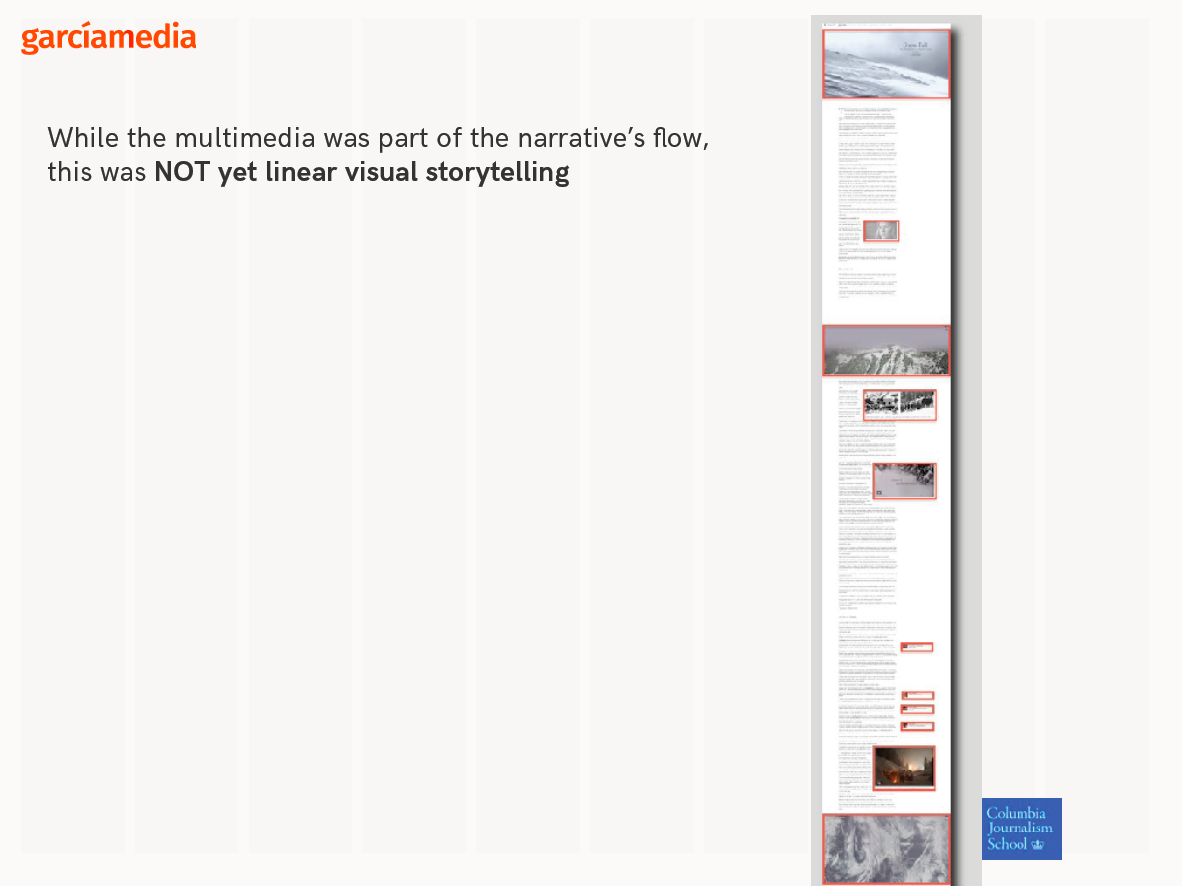
2. While Snow Fall did introduce the concept of “segmentation” for a long narrative, and used subheads to divide the segments, today’s linear digital storytelling has made greater emphasis on the creation of segments–or chapters– to help internal navigation of the story. As we are dealing with the journalism of interruptions, it is likely that such a long piece may not be read in one seating, so it helps to outline the story with proper divisions. Here is how Snow Fall introduced segmentation:
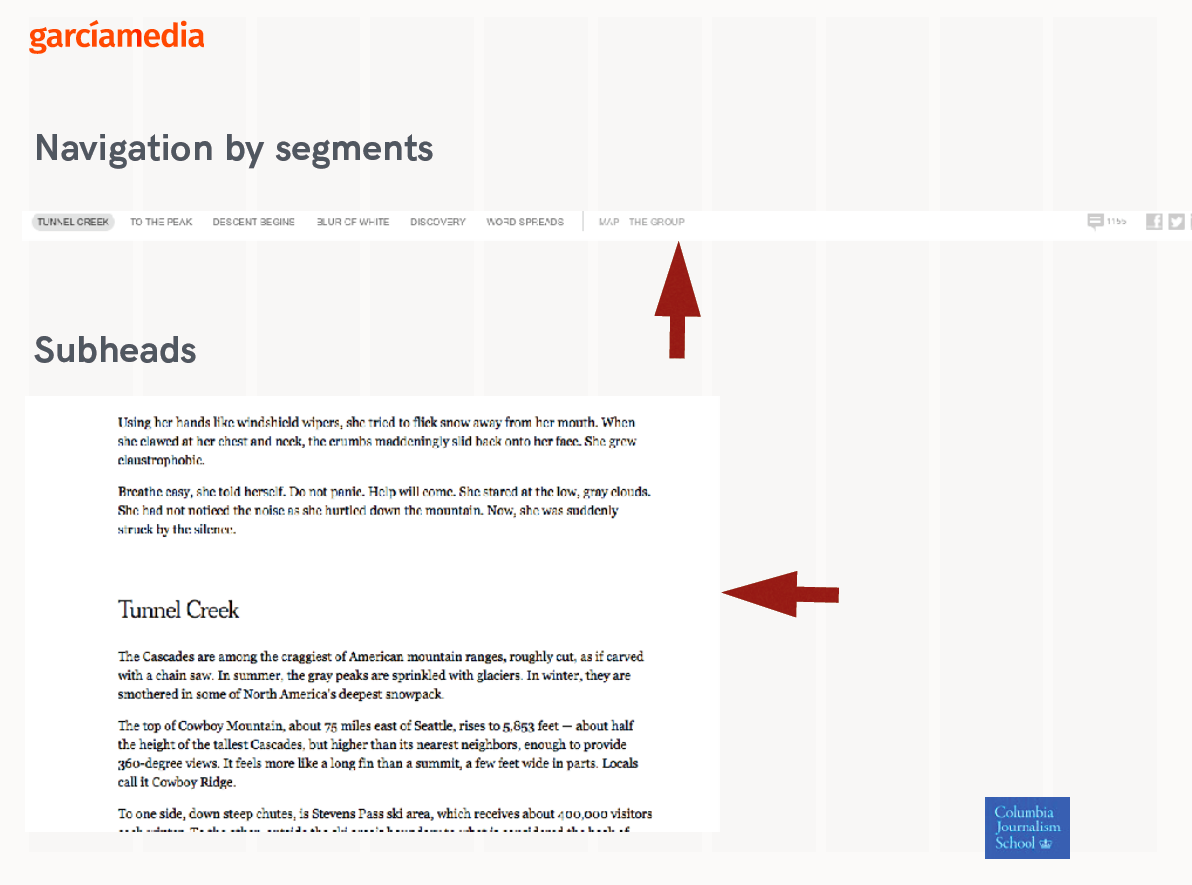
More recent examples, as in this New York Times piece about President Trump’s family inheritance put greater emphasis on the different segments, as does the Bergens Tidende piece below, which divides the story into parts.
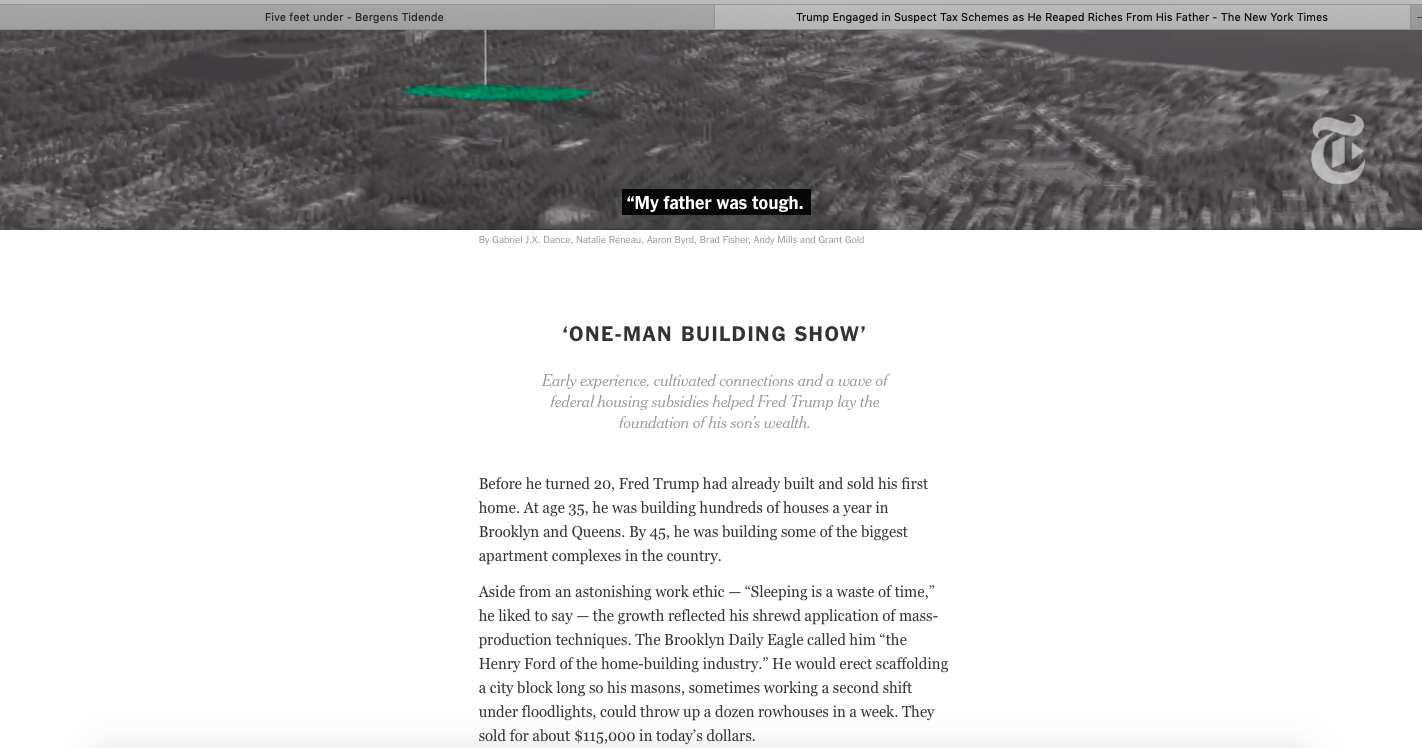
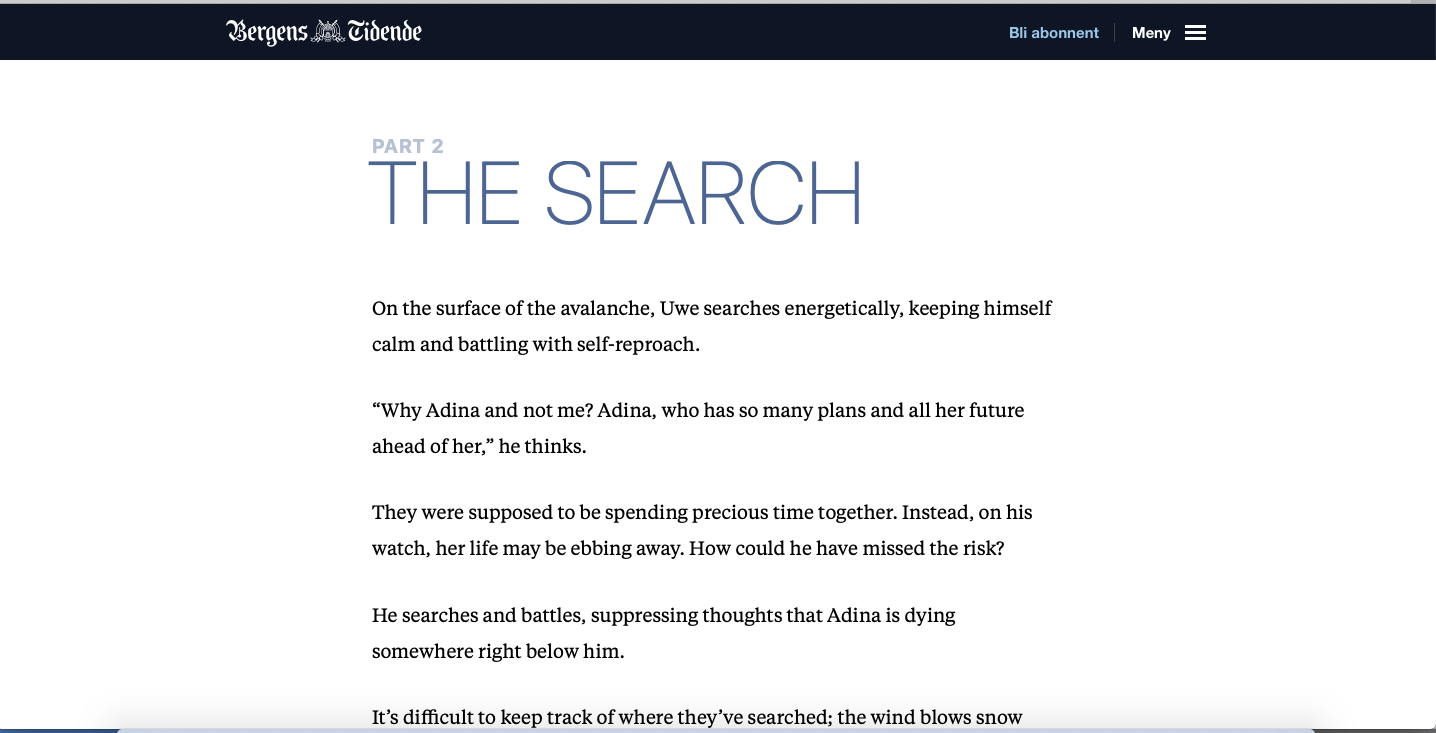
Look at the story here:
https://www.bt.no/btmagasinet/i/One4WO/Five-feet-under
My Daughter Is Trapped Under Five Feet of Snow
In the remote mountains of Norway, a father claws himself out after an avalanche….then starts frantically searching for his daughter.
Here is the English-language debut of this interactive story, produced by Bergens Tidende newspaper.
Originally published in Norwegian, it was a viral hit and recently won the “Best Storytelling” prize in Scandinavia’s prestigious Schibsted Awards.
In Bjorn’s own words:
Our earlier blog about Snow Fall
https://www.garciamedia.com/blog/the_multimedia_story_post_snowfall_progress/
In our Tuesday blog: a conversation with the writer of Five Feet Under
Bjorn Asle Nord tells us about the process of writing Five Feet Under and what it takes to write a story specifically for mobile.
TheMarioBlog post #2953